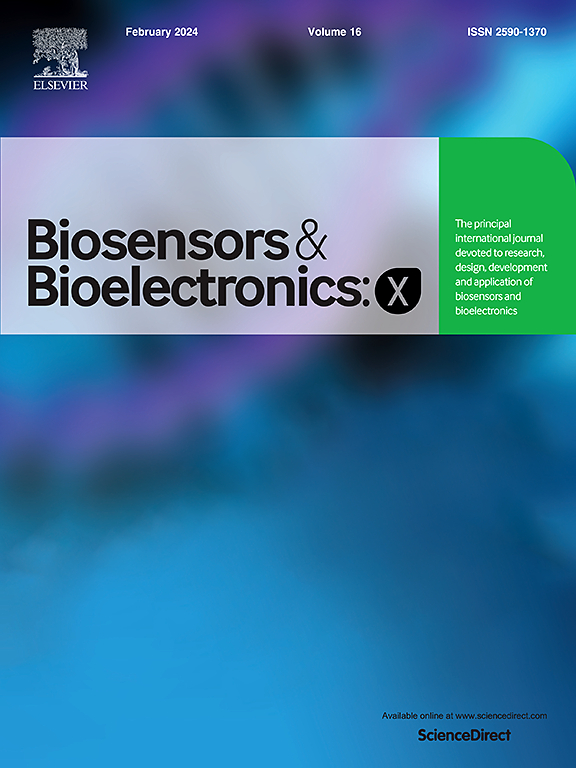Cas12b-assisted one-step dual-target CRISPR system for Mycobacterium tuberculosis detection
IF 10.61
Q3 Biochemistry, Genetics and Molecular Biology
引用次数: 0
Abstract
Tuberculosis (TB) remains a persistent public health threat, while the efficiency of traditional diagnostic methods is restricted. To address this, we developed a CRISPR-Cas12b-based one-step dual-target detection system (TB-QUICKv2) for sensitive and specific detection of the Mycobacterium tuberculosis complex (MTBC). Specifically, Cas12b and a molecular beacon (MB) probe were used to detect the target MTBC IS6110 sequence and an internal control (IC), the Bacillus spizizenii 16S sequence, in one reaction system, respectively. The optimal reaction temperature for TB-QUICKv2 was 57 °C and the detection procedure can be completed within 25 min. TB-QUICKv2 is highly specific (100 %) for MTBC with a limit of detection of 10.4 CFU per milliliter at a 95 % confidence interval. TB-QUICKv2 was further validated with clinical sputum samples and the results showed remarkably higher sensitivity (41/74) than the traditional culture method (37/74) and acid-fast bacillus (AFB) testing (33/74). Therefore, this study demonstrates that TB-QUICKv2 is a promising method for the rapid and accurate detection of MTBC and other infectious pathogens in the future.
cas12b辅助一步双靶点CRISPR系统检测结核分枝杆菌
结核病仍然是一个持续存在的公共卫生威胁,而传统诊断方法的效率受到限制。为了解决这个问题,我们开发了一种基于crispr - cas12b的一步双靶点检测系统(TB-QUICKv2),用于敏感和特异性检测结核分枝杆菌复合体(MTBC)。具体而言,Cas12b和分子信标(MB)探针分别在一个反应体系中检测目标MTBC IS6110序列和内部对照(IC) spizizenii 16S序列。TB-QUICKv2的最佳反应温度为57℃,可在25 min内完成检测。TB-QUICKv2对MTBC具有高度特异性(100%),在95%的置信区间内检测限为每毫升10.4 CFU。TB-QUICKv2在临床痰液样本中进一步验证,结果显示灵敏度(41/74)显著高于传统培养法(37/74)和抗酸杆菌(AFB)检测法(33/74)。因此,本研究表明,TB-QUICKv2是未来快速准确检测MTBC和其他感染性病原体的一种有前景的方法。
本文章由计算机程序翻译,如有差异,请以英文原文为准。
求助全文
约1分钟内获得全文
求助全文
来源期刊

Biosensors and Bioelectronics: X
Biochemistry, Genetics and Molecular Biology-Biophysics
CiteScore
4.60
自引率
0.00%
发文量
166
审稿时长
54 days
期刊介绍:
Biosensors and Bioelectronics: X, an open-access companion journal of Biosensors and Bioelectronics, boasts a 2020 Impact Factor of 10.61 (Journal Citation Reports, Clarivate Analytics 2021). Offering authors the opportunity to share their innovative work freely and globally, Biosensors and Bioelectronics: X aims to be a timely and permanent source of information. The journal publishes original research papers, review articles, communications, editorial highlights, perspectives, opinions, and commentaries at the intersection of technological advancements and high-impact applications. Manuscripts submitted to Biosensors and Bioelectronics: X are assessed based on originality and innovation in technology development or applications, aligning with the journal's goal to cater to a broad audience interested in this dynamic field.
 求助内容:
求助内容: 应助结果提醒方式:
应助结果提醒方式:


